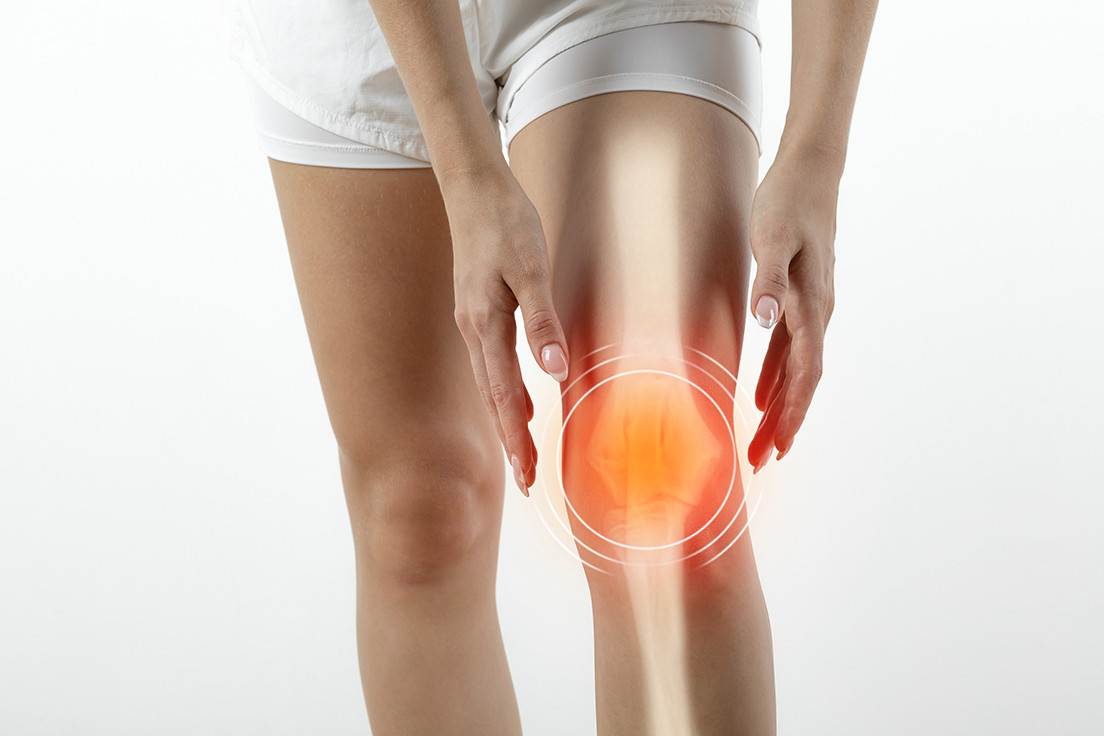- Osteoarthritis typically affects individuals aged 50 and above, with a higher prevalence in females due to hormonal influences. However, it's increasingly found in younger individuals, putting them at risk of premature osteoarthritis
- Symptoms of osteoarthritis include knee joint pain, stiffness, crepitus, tenderness, swelling, and deformity. Each person may experience symptoms differently, but common indicators include a stiff or stiff knee joint, along with audible noises and soreness around the knee
- Treatment options for osteoarthritis symptoms vary based on disease severity. These may include exercise, intra-articular injections (such as injecting vitreous fluid into the joints), medications, physical therapy, or surgical interventions. Treatment plans are tailored to each individual's needs and circumstances

Osteoarthritis is a form of “Arthritis” is the most common type. Because the knee joint is a joint that receives a lot of use. and directly supports the weight of the body Osteoarthritis is caused by a condition in which the cartilage on the knee joints wears, tears, and deteriorates with age and many factors. When the cartilage on the articular surface wears out more, Therefore causing knee pain. It also stimulates inflammation in the knee joints. which if allowed to have severe symptoms The joint surface is increasingly damaged. The bones in the knee joint will rub against each other more. The patient will feel pain with every step they take. In addition, the knee joint will be stiff. Can't bend and stretch all the way Therefore, it greatly affects the lives of patients.
Risk group that has a chance of being “Osteoarthritis”
In most cases, patients with knee osteoarthritis will be found with an average age of 50 years or older, with more females than males. Due to hormonal, bone, and muscle factors, osteoarthritis is still found in people who are younger. This group of people is at risk of developing premature osteoarthritis, such as people who have had joint injuries before. Whether it is an injury from exercise or an accident in the knee joint. A group that eats very nutritious food until becoming obese or having too much weight This causes the knees to bear even more weight. Or have an underlying disease such as rheumatoid arthritis or gout. These disease groups will progressively destroy cartilage, eventually causing pain, swelling, and stiffness in the knee joint.
Symptoms of Osteoarthritis
In general, Symptoms of osteoarthritis usually occur gradually. happens slowly and the severity of the disease will gradually Increases even more as time goes on as well. If you want to check to see if you have symptoms of osteoarthritis or not. The following signs of osteoarthritis can be observed:
- Knee pain – The patient haspain in the knee joint areaon and off for more than 6 months,painafter doing activities that put a lot of pressure on the knee joint surface or walking long distances, such as when squatting, squatting, sitting cross-legged, going up and down stairs, walking. travel Or when sitting in a cramped car Then you have to sit with your knees bent for a long time. If it is osteoarthritis in the early stages After doing that activity The pain will not last long. and will disappear on its own But if it is a medium term or more The pain will be continuous. If you don't use your knee joint, such as while lying down or resting, you'll still have pain. and cannot heal on its own Or if it is cured, it will not be completely cured.
- Knee joints are stiff and stiff – you can notice when you wake up that There is stiffness, stiffness in the knees, and difficulty moving in the morning. Is it less than or equal to 30 minutes? Or if you haven't moved your body for a while and then come back to moving again? There may be stiffness. Feeling that the joints lack flexibility Or if you have a stuck knee, when you stretch or bend your knee you feel like you can't do it all the way.
- Knee joint noise – A rustling sound in the knee joint during physical movement.There is bending or straightening of the knees.
- There is a sore point around the knee jointwhen using your hand to press on the knee joint. will feel hurt
- joint is deformed – it can be seen that the bones around it The knee joint will appear to grow. There may be a bone sticking out. or have deformed knee joints
- Swelling – The knee joint area will have swelling. When you touch it, you will feel that your knees are warm. This is caused by inflammation that occurs within the knee joint. This symptom occurs when knee osteoarthritis has reached a moderate stage.
Osteoarthritis Symptoms that should see a Doctor
If the patient has had the above symptoms come and go for 6 months or more and has not gotten better after taking painkillers. or need to take painkillers or anti-inflammatory drugs continuously to stop pain You should see an orthopedic specialist quickly before symptoms become severe. to receive the most appropriate diagnosis and treatment